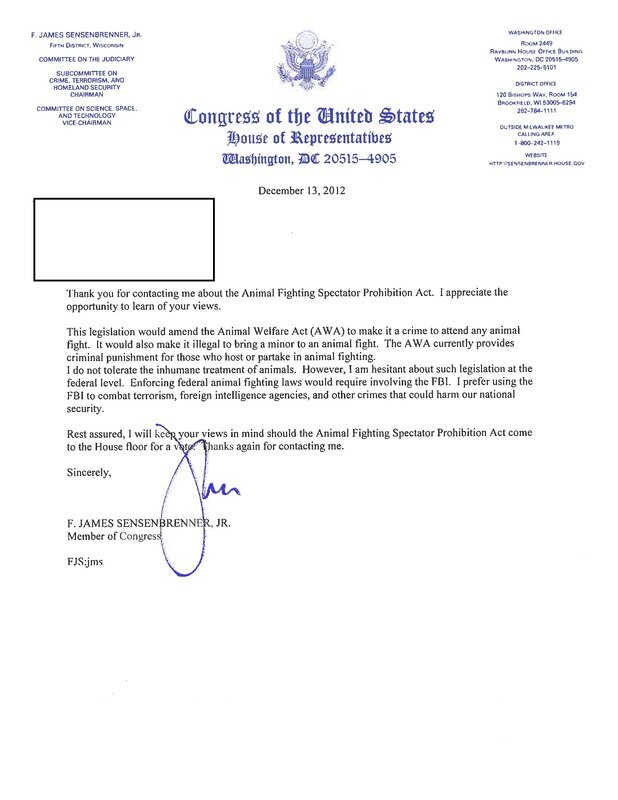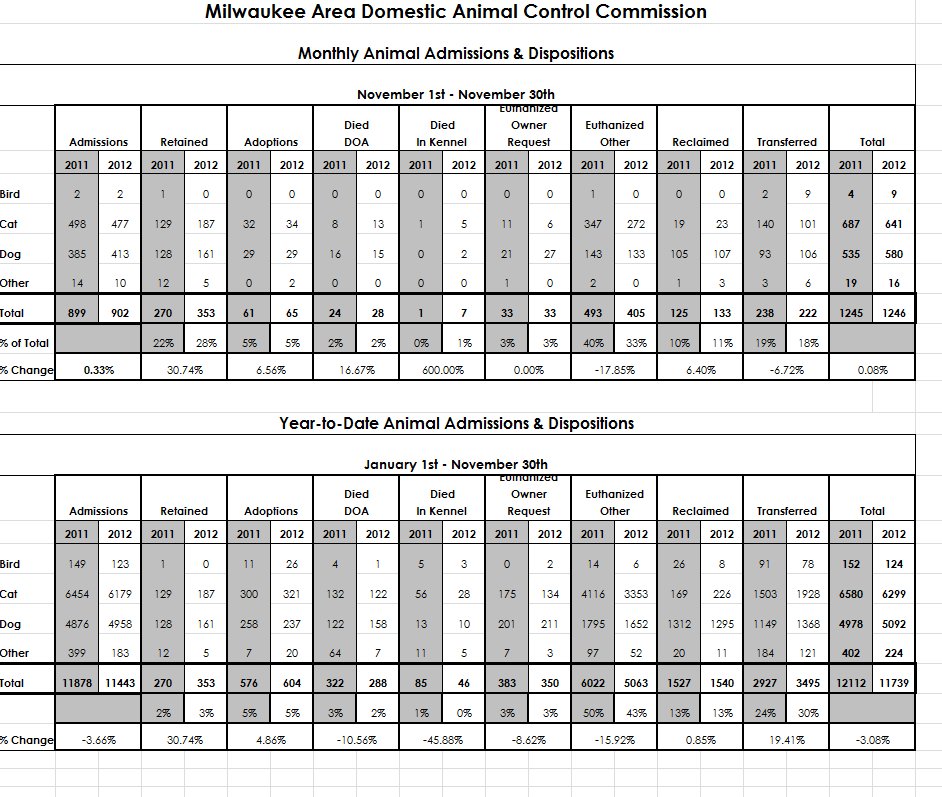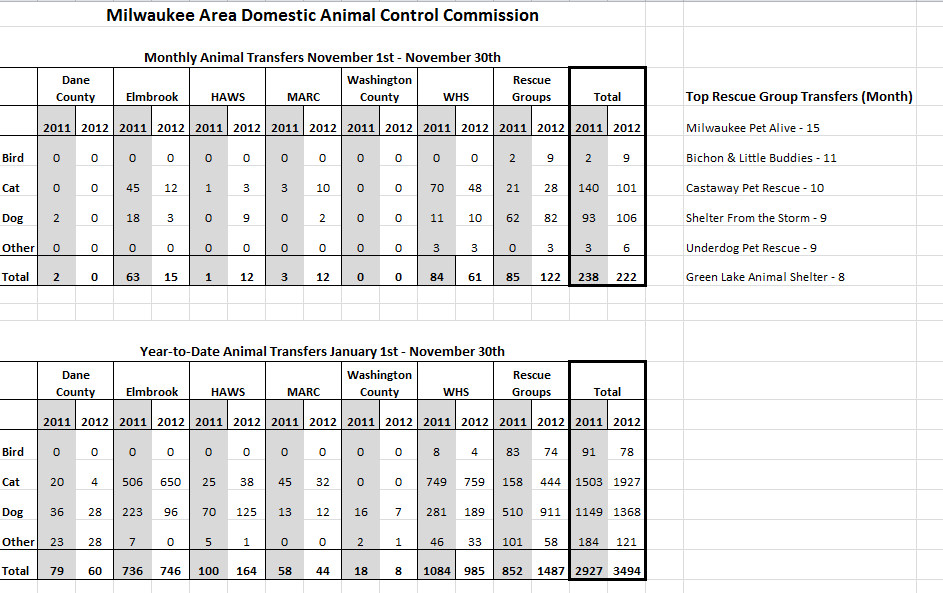|
Milwaukee Area Domestic Animal Control (MADACC has killed 5063 animals so far this year through November 30, 2012. (This does not include those that died in their kennel, were dead on arrival, or were owner-requested euthanasia).
Six birds, 3353 cats, 1652 dogs, and 52 other animals died at MADACC. The charts below show comparisons from last year to this year and also the breakdown of the November statistics. As you can see, in November alone, MADACC killed 405 animals. Summer months are generally the busiest months for animal control, intake numbers typically decrease in the fall and winter. Especially troubling is that seven animals died in their kennel in November 2012. A 600% increase from November 2011. Some improvement in overall numbers has been shown over last November but other cities in America are doing much better while Milwaukee is lagging behind. Cities such as Reno, Austin, San Antonio, Jacksonville, Salt Lake City and Kansas City, Missouri are improving their animal control programs and saving lives. The key to solving the problem is knowing that there is a problem. If you did not know that MADACC had such a high death rate for animals in Milwaukee County please share this blog post with your friends and neighbors. If you are a resident of Milwaukee County please contact your local alderman to express your displeasure. Milwaukee County animal control is funded by your tax dollars. Milwaukee Area Domestic Animal Control Commission (MADACC) Transfer Numbers - November 201212/20/2012
Do you ever wonder which shelters and rescue groups transfer the most animals out of MADACC and make them available for adoption at their own facilities? Here are the year to date through November 2012 transfer numbers. You can also compare to the transfer numbers from 2011.
Of course, there are a lot of things to be taken into consideration. One of the top-pulling rescues, Remember Me Ranch, has been "banned" from pulling dogs. Current MADACC management also makes it incredibly difficult for rescues and shelters to pull dogs. There is a serious lack of communication. They also make it difficult for BRATS, the all volunteer transport service, to facilitate the transfer. Plus, many of the dogs leaving MADACC are sick because of poor sanitation and veterinary practices. This makes shelters and rescues reluctant to "pull" because it can be very expensive to rehabilitate sick or injured dogs. There is also the risk of disease transmission to the rest of their shelter's animals. Transparency is the key to making changes for our companion animals. We must know what the problem is if we are going to try to solve it. |
Our blog will be an ongoing conversation regarding humane legislation and improved conditions for companion animals in Wisconsin. Feel free to contact us with your letters, ideas and input. wivotersforcompanionanimals @gmail.com
CategoriesAll ArchivesNovember 2020  RSS Feed RSS Feed
Authors
|
| Wisconsin Voters For Companion Animals |
|





